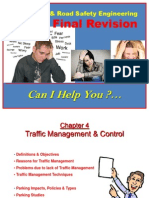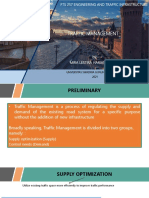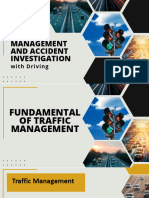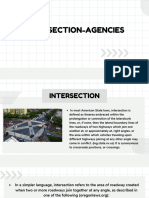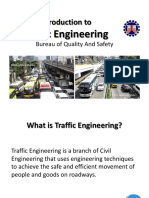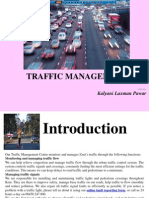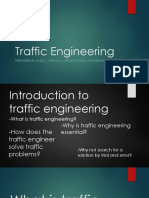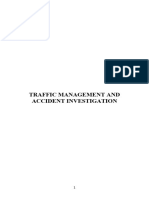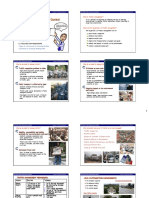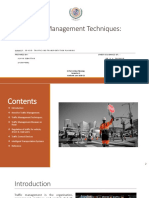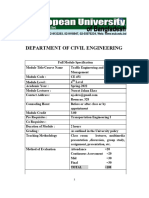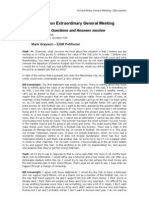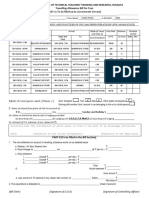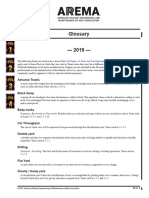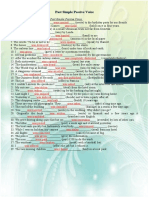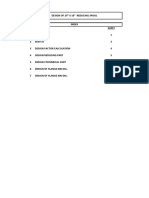0% found this document useful (0 votes)
73 views49 pagesChapter 3a
Traffic management aims to ease congestion, improve safety and flow, and reduce environmental impacts. It does this through techniques like improving intersections, restricting parking and loading, implementing one-way streets, and prioritizing buses and high-occupancy vehicles. Traffic restraint measures like physical barriers, regulations, and road pricing further these goals. Traffic calming uses devices that slow speeds and cut-through traffic to enhance livability and safety. Careful control over access points and development layouts also supports effective traffic management.
Uploaded by
Farhan AmiraCopyright
© © All Rights Reserved
We take content rights seriously. If you suspect this is your content, claim it here.
Available Formats
Download as PDF, TXT or read online on Scribd
0% found this document useful (0 votes)
73 views49 pagesChapter 3a
Traffic management aims to ease congestion, improve safety and flow, and reduce environmental impacts. It does this through techniques like improving intersections, restricting parking and loading, implementing one-way streets, and prioritizing buses and high-occupancy vehicles. Traffic restraint measures like physical barriers, regulations, and road pricing further these goals. Traffic calming uses devices that slow speeds and cut-through traffic to enhance livability and safety. Careful control over access points and development layouts also supports effective traffic management.
Uploaded by
Farhan AmiraCopyright
© © All Rights Reserved
We take content rights seriously. If you suspect this is your content, claim it here.
Available Formats
Download as PDF, TXT or read online on Scribd
/ 49

